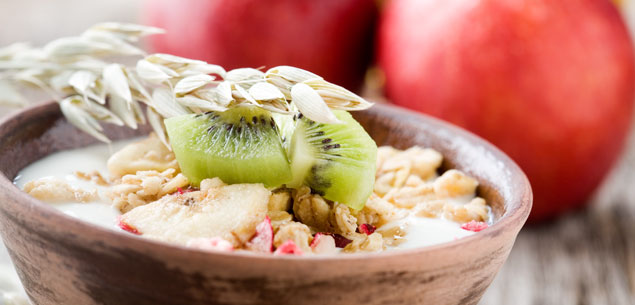We’re constantly being told to eat more fibre, but knowing why it is important may make us more likely to choose wholegrain bread over white. And just how do you get the recommended daily intake?
Fibre can:
Help to protect against bowel disorders and other problems such as haemorrhoids.
Decrease levels of unhealthy LDL blood cholesterol, reducing the risk of heart disease.
Cut the risk of diabetes by slowing absorption of glucose into the body and improving blood glucose levels.
Help to control weight by making you feel full.
Boost the immune system, which can help protect you against diseases such as cancer.
What does fibre actually do?
Insoluble fibre is like a brush, passing through the body and scrubbing up waste, dumping it to be removed from the body.
Soluble fibre acts more like a sponge, absorbing fluid and making bowel contents softer so they are able to move through the body more easily. It also helps the body retain more nutrients from food.
Foods rich in insoluble fibre:
Wholemeal and mixed-grain breads.
Wholegrain cereals.
Wholewheat pasta.
Rice (especially brown).
Corn.
Fruit and vegetables.
Foods rich in soluble fibre:
Oats.
Legumes (beans and lentils).
Vegetables, particularly broccoli, brussels sprouts, carrots and potatoes.
Fruit, especially apples, pears, citrus, stone and berry fruit.
Tips for increasing your fibre intake:
Choose wholemeal or wholegrain bread instead of white.
Add toasted seeds, such as sunflower or pumpkin seeds, to your salads.
Add lentils or chickpeas to a casserole – not only do they add fibre, but they make the meal go further.
Add kidney beans to a salad.
Eat the skin of fruit, such as apples and pears, and also on potatoes and carrots.
Add fruit to yoghurt.
Add salad to sandwiches. Instead of having only chicken or ham, include avocado, tomato or carrot.
Fibre content of foods
1 cup cooked split peas 16g
1 cup kidney beans 16g
1 cup frozen green peas 14g
½ cup baked beans 8.2g
½ cup muesli 6.5g
1 bran muffin 6g
1 cup wholewheat, cooked spaghetti 6g
1 medium pear 6g
1 cup broccoli 5g
1 cup cooked spinach 4g
1 medium potato (skin on) 4g
3 cups air-popped popcorn 4g
1 cup brown rice 3.7g
1 slice wholemeal bread 3.2g
1 slice wholegrain bread 2.6g
1 cup porridge 2.1g
1 banana 2g
2 tbsp walnuts 2g
Women need around 25g of fibre a day, while men should aim for about 30g.
Good to know…
Add extra fibre gradually to avoid possible side effects, such as bloating and wind. Make sure you regularly hydrate, as fibre absorbs water in your body. If people who don’t eat much increase their intake until they are consuming twice as much as before, they may reduce their risk of colorectal cancer by 40%.
Healthwatch
A new study suggests our emotions can make us perceive the taste of food differently, and render us less able to register how much fat we are eating. German researchers found that when people are particularly happy or sad, they are better able to detect bitter, sweet and sour flavours – but less able to discern how much fat there is in the food. This could explain why we eat more of certain foods when we are depressed.
Just 20 minutes of yoga a day sharpens the mind and is more effective at boosting brain power than conventional aerobic exercise. US researchers found that a single session of hatha yoga significantly improved speed and accuracy, when study subjects were tested for memory and concentration.




